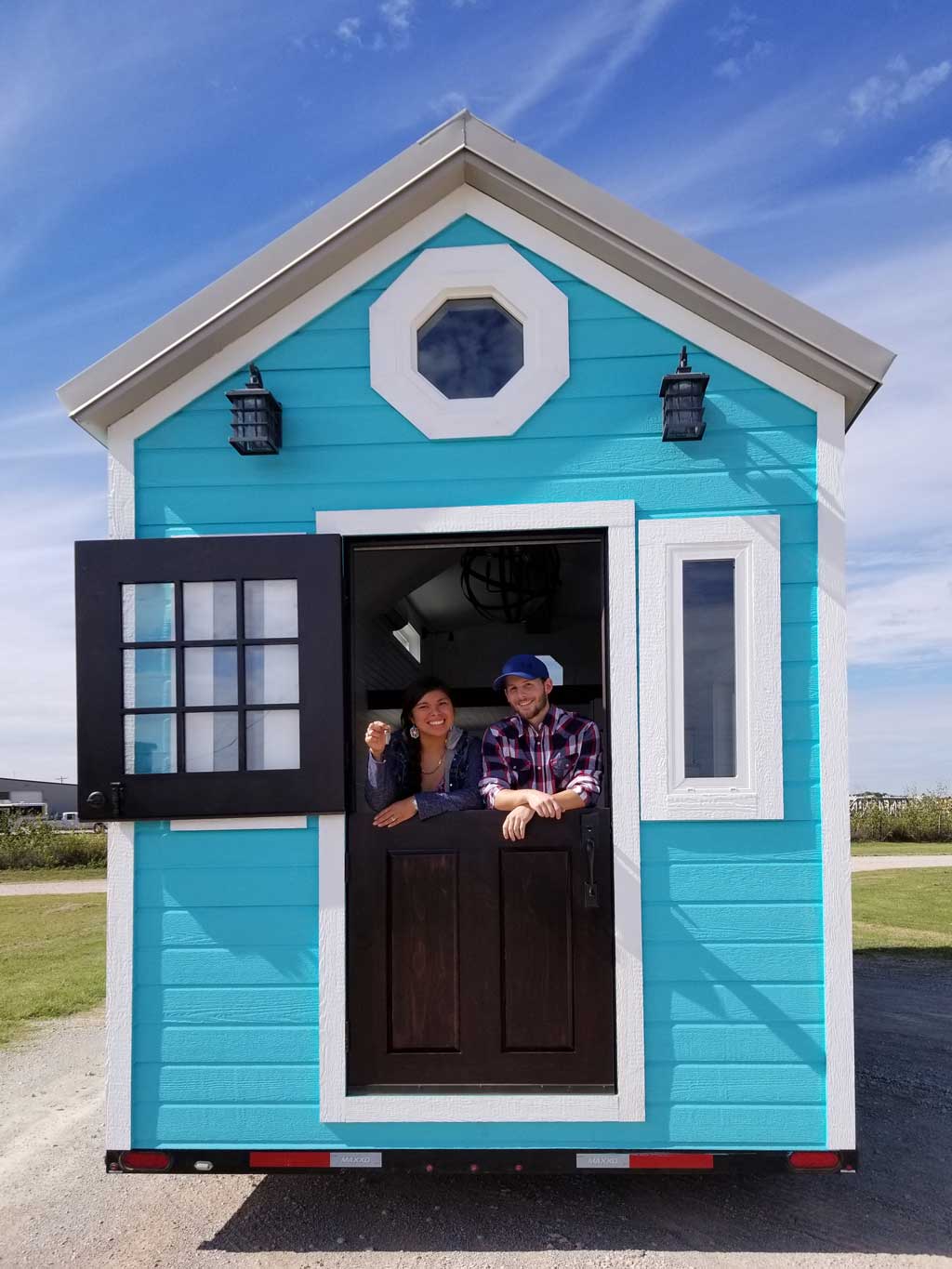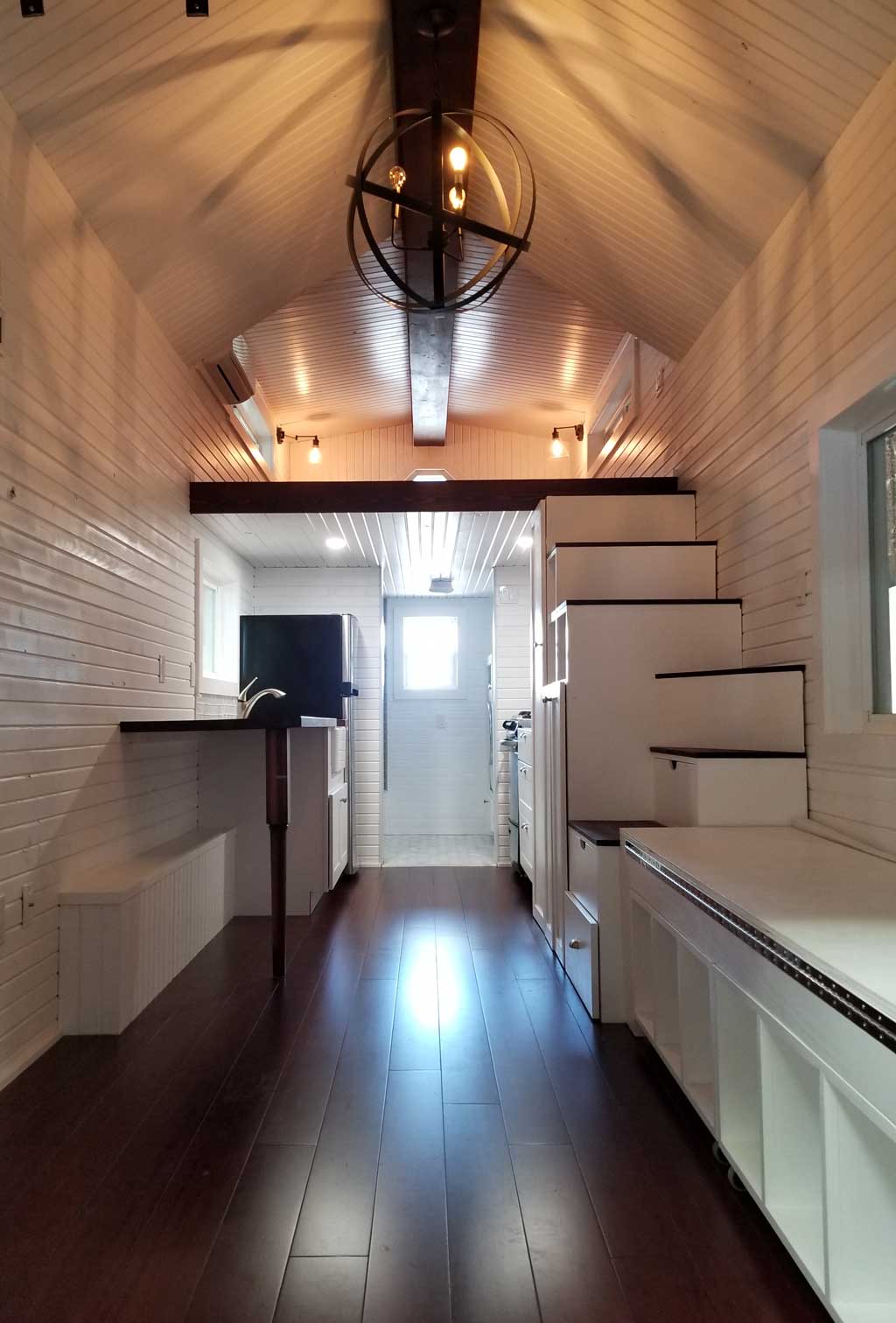
Tiny homes, the newest trend in residential ownership, blend the benefits of apartment living with a single-family dwelling. TV home design networks have jumped quickly on the idea by showcasing the myriad buyers in the market for these scaled-down houses.
In Oklahoma, however, prospective owners have been a bit slower to embrace the trend, says Andrea Moore, owner of Town and Country RV Park and Housing in Marlow.
“The market is just now taking off in our area,” Moore says. “We are seeing people buying tiny homes for their elderly parents and for vacation homes, like lake and hunting cabins.”
In metropolitan areas, tiny home communities are a soon-to-be reality, says Michelle Wunder, owner of Tiny Homes of Oklahoma, based in Oklahoma City. However, zoning constraints have challenged the market there.
“In our state, tiny homes fall under what is called a towable vehicle,” Wunder says. “Zoning restrictions limit where people can live in tiny homes full time right now.”
However, micro-housing proponents are working to find a place in the state. Developer Blair Humphreys, in partnership with Wunder, has a vision to incorporate tiny homes into a modern housing development in OKC’s Wheeler District.
“With a price point of less than half the average of a new home in Oklahoma, people want the convenience of tiny living in an urban setting,” Wunder says.
There is another free-form community in the works in north OKC, Wunder says, but the neighborhood faces opposition.
“Some people are worried about what tiny homes will do to traditional home values,” Wunder says. “But tiny homes are not like a run-down mobile home. It is a mistake to assume because someone paid less for their house they have less pride of ownership. People who buy a tiny home are committed to this lifestyle and, since the homes are easy to maintain, owners can take better care of their home.”
Beyond affordability, the next key selling factors for tiny home living are versatility and mobility. They’re literally houses on wheels, after all.
“You really can hook up your house and move it with your life,” Wunder says. “I can have [my show home] hooked up in 15 minutes.”

While traveling with a tiny home is an option, Moore and Wunder both agree it’s not as easy as a traditional travel trailer.
“A tiny home is much heavier than an RV,” Moore says. “It can be costly to transport.”
Tiny homes find their niche, however, in the ability to slash the costs of living.
“The minimal square footage means less to clean, and homeowners get to reduce their electric bills, insurance rates and property taxes,” Wunder says.
That reduction of cost comes with a few restrictions – mainly in the form of space.
“It will definitely be an adjustment to get use to the minimal space,” Moore says. “You have to be more organized and creative with your storage.”
But Wunder enjoys the challenge when designing tiny homes for her customers, crafting custom cabinetry and outside-of-the-box solutions for each one.
“I am fascinated by tiny homes,” Wunder admits. “We utilize every square inch available.”
























